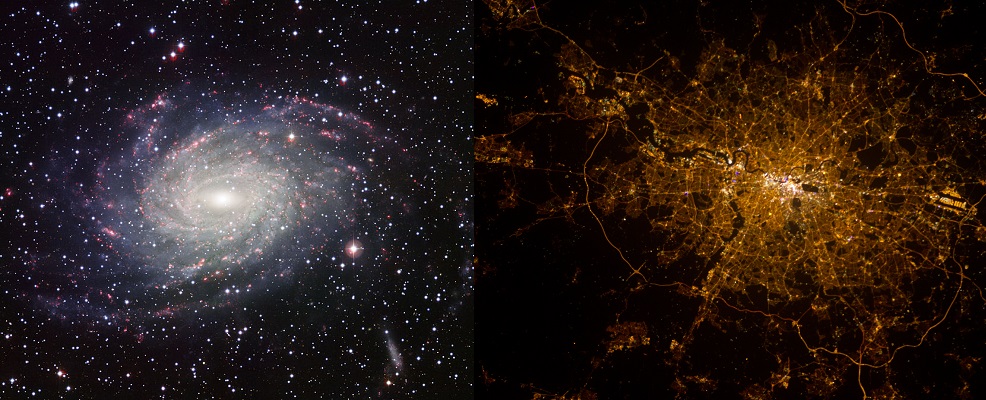I talk to a lot of people about the universe. Tens of thousands of people a year, ranging from 3-year-olds to 93-year-olds.
And one of the things everyone finds hard to comprehend is the sheer scale of the universe. We’re used to dealing with a daily existence spanning mere metres. Sometimes we drive hundred of kilometres; occasionally we fly thousands. Yet the nearest star to us (after the Sun) sits a staggering 40 trillion kilometres away. And that’s before we get to the rest of the stars in our galaxy, let alone the trillions of galaxies beyond that.
Over the years I’ve developed a way of explaining the structure of the universe. It isn’t meant to be representative of scale, but rather shows how some structures are nested within others in a way that resonates with our daily lives.
Picture it this way:
Our solar system is your house – the Sun and the planets represent the rooms in your house. Granted few of us have nine rooms in our house, but it’s almost there.
Then there are the other solar systems we have discovered in the last two decades, some 3,000 exoplanets. Think of these other solar systems as the other houses on your street and those streets immediately surrounding yours. They are separate, but they are pretty close by and pretty similar.
If you zoom out from your street, what you’d see next would be your city or your town. The same is true of space – stars tend to live in cities just like people. Except astronomers call a city of star a “galaxy”. Most galaxies come complete with hectic downtown regions, as well as quieter suburbs where we live.

Galaxies are cities of stars, much like cities on Earth are collections of people (Spiral Galaxy vs. London at night)
On Earth, cities are collected together to form groups known as countries. The same is true in space. London is one of 69 cities in the United Kingdom; the Milky Way belongs to a group of at least 54 galaxies known as the Local Group.
The UK is one of 44 countries making up the geographical continent of Europe, just as the Local Group belongs to a larger group of clusters known as the Virgo Supercluster which contains around 100 galaxy clusters.

Galaxy groups form clusters, much like groups of countries form continents (Virgo Supercluster vs Europe at night)
In turn Europe is one of the world’s seven continents. But here is where the geographical analogy jumps quite a lot in scale. The visible universe is made up of 10 million superclusters! It stretches a staggering 93 billion light years from side to side.

Finally, just as continents make up the world, superclusters form the structure of the observable universe



